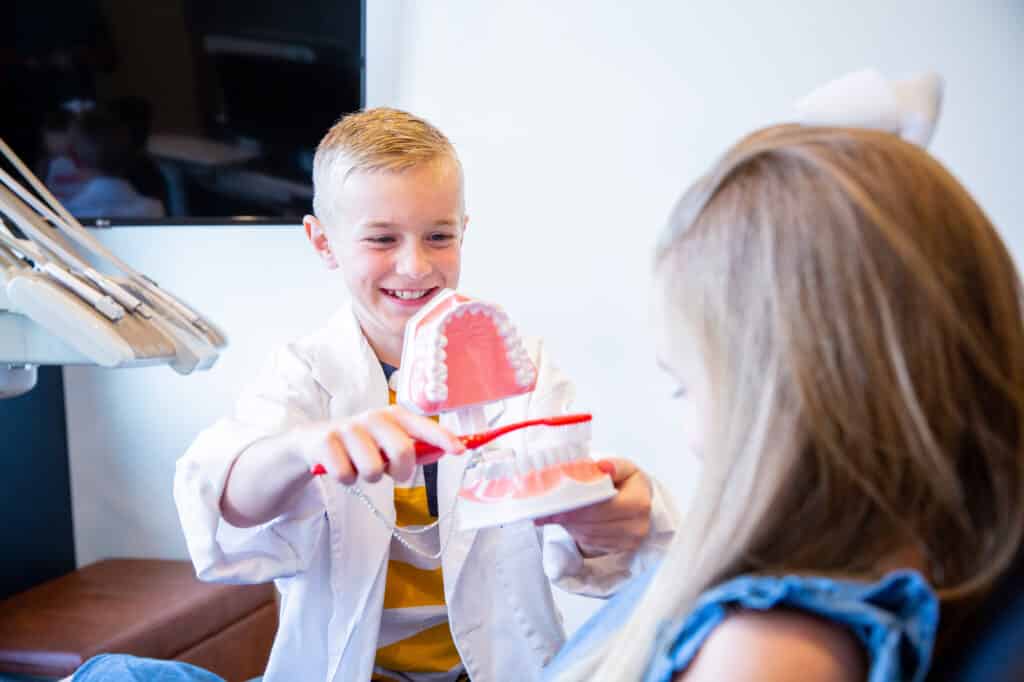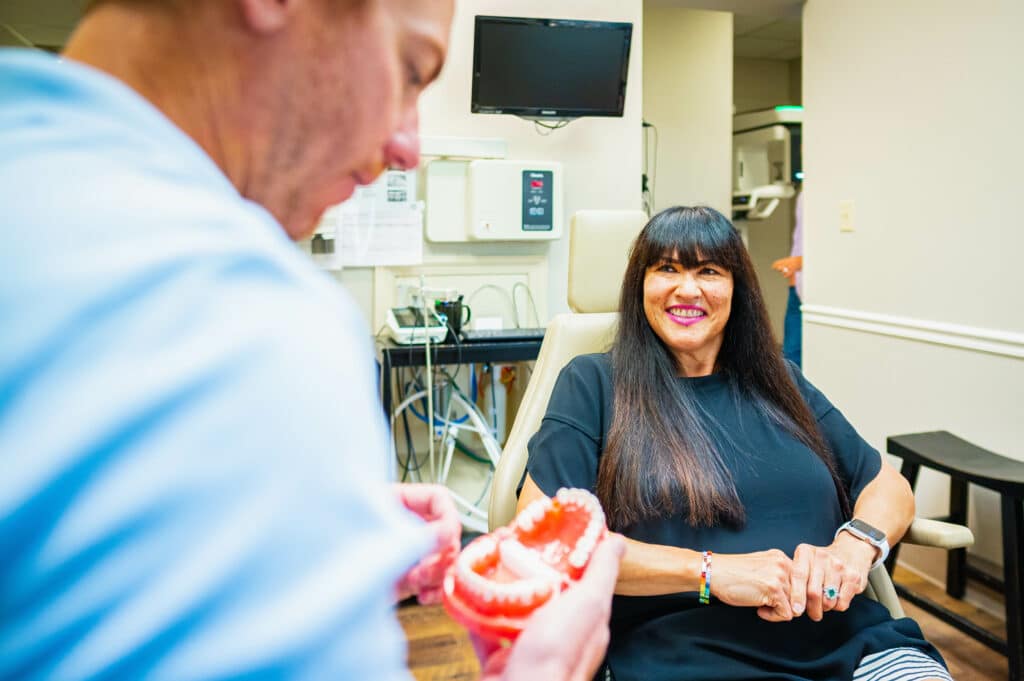Does your toothpaste have stripes? How important are those stripes, and how does it get stripes? Which toothpaste is the best for you?
You may not think toothpaste is all that complicated, but there are many choices out there, including different types of striped toothpaste. We’ve had patients at Endicott Dental ask us for the best toothpaste to prevent cavities. Some even want to know how toothpaste gets its stripes.
How Is Toothpaste Made?
Toothpaste ingredients include water, foamers, abrasives for scrubbing, fluoride, and toothpaste flavors. Each set of ingredients is mixed in vats and cooked so they don’t react when combined. The ingredients are carefully blended into a paste and put into a tube.
The ingredients react when you use them on your teeth, and your saliva reacts with them. That’s when the toothpaste foams and begins cleaning your teeth.
Gel vs. Paste
What’s the difference between gel and paste? Gels usually contain more silica, which gives the toothpaste its translucent appearance. Paste contains more abrasives, which can wear down enamel over time. That’s why those with thin enamel should use gel instead of paste. Gels are better for small children, too.

What Are the Toothpaste Types?
You have so many options when it comes to toothpaste. Should you get paste or gel? Do you need teeth whitening or fresher breath? Does toothpaste for sensitive teeth really work?
Fluoride Toothpaste and Fluoride-Free Toothpaste
Let’s start with the basics. The one thing we prefer you have in your toothpaste is fluoride. Why? Fluoride protects your tooth’s enamel, the hard shell that protects the living interior of your tooth. Fluoride strengthens enamel. Without it, bacteria in plaque can eat through the enamel and cause cavities.
Those who prefer or can’t use fluoride can find fluoride-free toothpaste, but you must look carefully at the label. That’s because most toothpaste contains fluoride. While there are a few options for fluoride-free toothpaste, we strongly recommend using fluoride to prevent tooth decay.
Whitening and Freshening Toothpaste
After that, the right toothpaste just depends on what you need or prefer. Regular toothpaste is just fine if all you need is a good cleaning. If you want fresher breath, some toothpaste include stripes with breath-freshening gel.
Some offer teeth whitening as an option. You won’t see results like you would with professional teeth whitening, but you should see your teeth get a shade or two whiter over time. However, do not use whitening toothpaste if you are wearing braces!
The toothpaste won’t penetrate the bonding agent holding your brackets to your teeth. Once your braces are removed, you’ll end up with dark squares on your teeth, and it would be very difficult to repair the damage.
Sensitive Toothpaste
There is also toothpaste for sensitive gums and teeth. People have sensitive teeth for a variety of reasons. They may genetically have thinner enamel, or certain medications they’re taking could cause tooth sensitivity. Some medical conditions can also cause tooth sensitivity.
Sensitive toothpaste works by blocking the pain sensors in teeth that respond to heat, cold, and sweet. Often, a key ingredient is potassium nitrate. It usually takes several weeks for it to take full effect, but most patients report at least some relief with sensitive toothpaste.

How Does Toothpaste Keep Its Stripes?
Have you ever noticed that striped toothpaste always comes out with the stripes? No matter how much you squeeze, it always seems to come out striped! Why is that?
After this question came up recently on social media, toothpaste maker Colgate recently answered this question. It all comes down to viscosity. Essentially, the paste and gel are both so thick that they will stretch and bulge but won’t mix. So no matter how much you squeeze the tube, your toothpaste will come out as stripes.
When Should You Start Using Toothpaste?
It’s important to teach your child good oral hygiene habits early. The earlier they learn how to brush and floss their teeth properly, the better their chances of keeping those dental hygiene habits going for the rest of their lives.
Your child should not start using toothpaste until they’re 1-3 years old. You should clean your baby’s teeth with warm water on a washcloth as soon as they erupt. Your child will learn to have something in their mouth to clean their teeth, and you can keep their teeth and gums clean and healthy.
Once they have several teeth, you can change to a small child’s toothbrush and non-fluoride toothpaste. That’s because small children can run the risk of overdosing on fluoride. They need to grow before their systems can handle the added fluoride.
Your child can start using fluoride toothpaste at about age 3, but only a pea-sized amount. You need to monitor their toothbrushing carefully and teach them to spit out any access. If they don’t spit out the excess, continue to use the non-fluoride toothpaste until they learn. Usually, children will get the hang of it by age 5.
As they get older and more teeth come in, they can move to a larger toothbrush. Use a soft-bristle toothbrush that won’t damage the enamel or irritate the gums. We recommend an electric toothbrush because it scrubs better and reaches more places on the teeth than a manual toothbrush.
Don’t forget to floss! Floss first so the plaque and food particles you get from between your teeth can be brushed away while you brush your teeth.

Family Dentistry in Broken Arrow, OK
It’s important to use the right toothpaste, but it’s also important to get a professional dental cleaning. If you need dental care in Broken Arrow, OK, schedule an appointment with Endicott Dental. We will help you keep your teeth clean, healthy, and strong.


